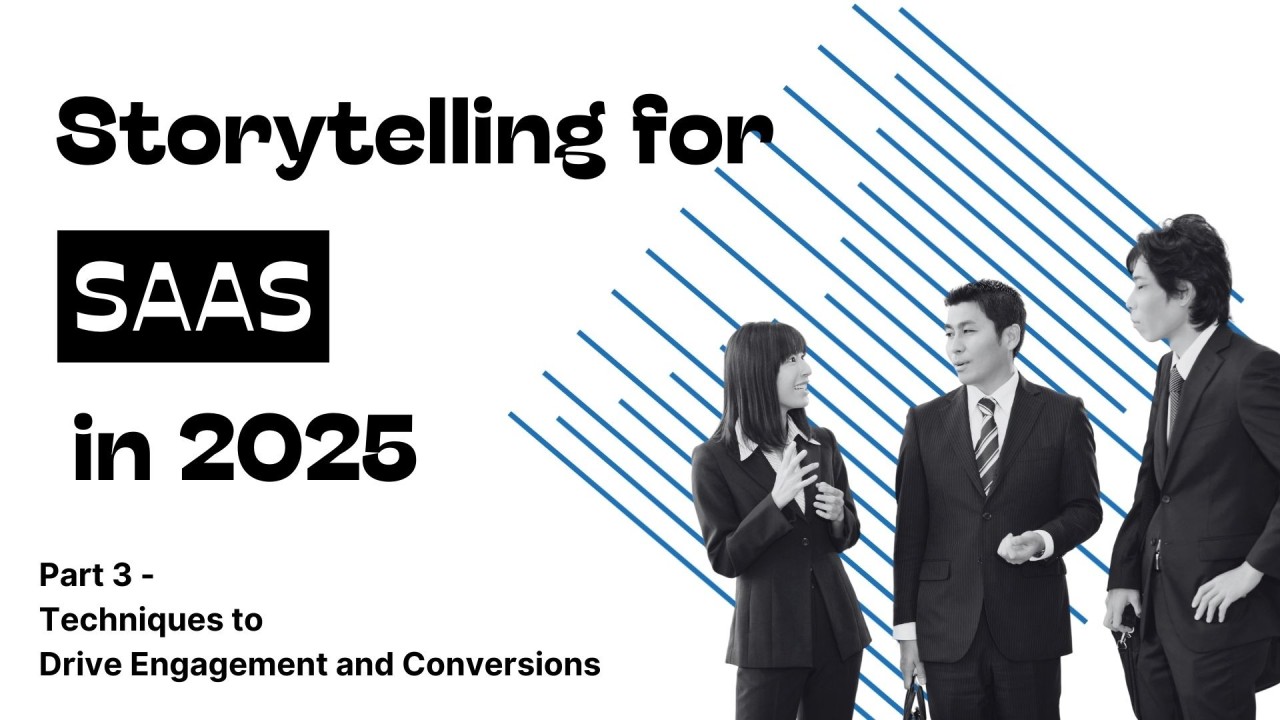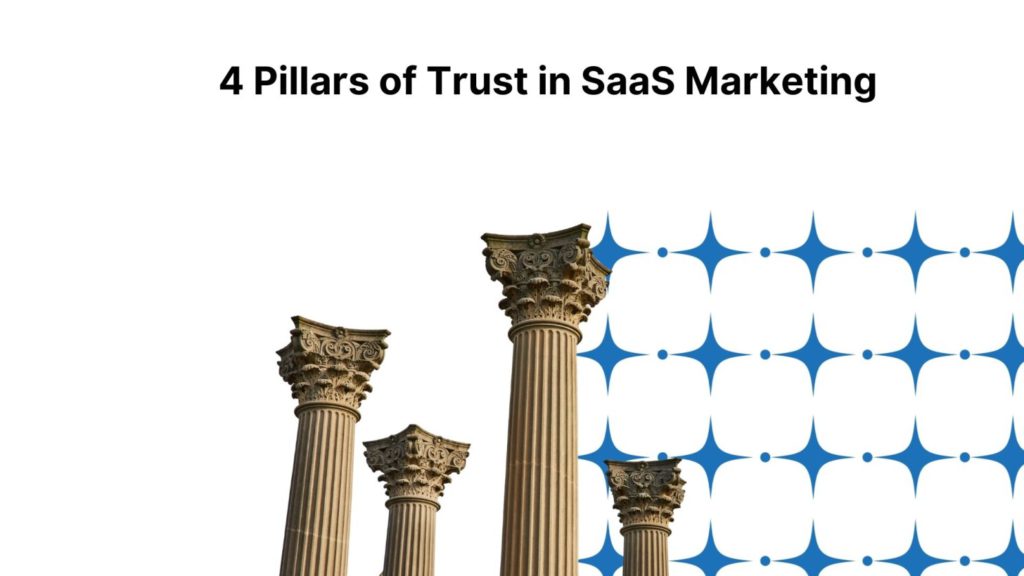
- Effective storytelling techniques like ABT, PAS, and BAB assist SaaS organizations in identifying problems, offering fixes, and increasing conversions.
- For SaaS companies to establish enduring customer connections, the four pillars of trust i.e transparency, reliability, competence, and empathy are essential.
- Blue Caffeine helps SaaS companies use storytelling and trust to boost audience engagement, inspire action, and drive sustainable growth for long-lasting client relationships and success.
Storytelling is an effective technique in the SaaS industry for drawing in customers, simplifying difficult concepts, and eventually increasing conversions. SaaS companies may enthrall audiences, effectively convey their value, and inspire action by utilizing tried-and-true storytelling tactics. In this last installment of our series, we will examine three very successful narrative techniques: BAB (Before, After, Bridge), PAS (Problem, Agitate, Solution), and ABT (And, But, Therefore). We’ll also explore the four trust pillars that help SaaS marketers create enduring, solid customer connections.
SaaS Storytelling Strategies Using ABT, PAS, and BAB Techniques
In the SaaS industry, storytelling is a potent tool for client engagement and for demystifying complicated ideas. SaaS organizations can craft tales that captivate attention, communicate value, and inspire action by employing approaches such as the ABT Technique (And, But, Therefore), PAS Technique (Problem, Agitate, Solve), and the BAB Formula (Before, After, Bridge) to structure stories.
1. ABT Technique (And, But, Therefore)
The ABT Method adheres to a simple storyline:
And: Expresses the situation as it is right now.
But: Presents a problem or point of conflict.
Consequently, provides a solution.
Real-Life Example: Slack
- And: “Teams today need efficient communication tools to stay connected and work collaboratively in real-time, and email was once the standard way to communicate.”
- But: “But, emails are slow, cluttered, and difficult to track, which leads to miscommunication, missed updates, and wasted time.”
- Therefore: “Therefore, Slack was created to provide teams with a streamlined, real-time messaging platform, enabling faster, clearer communication and boosting productivity across the board.”
Why It Works for SaaS:
The ABT approach shows customers the pain areas and acknowledges their current condition, drawing them into the tale and creating a sense of urgency. Presenting the product as the way to overcome their difficulties, the answer emerges organically.
2. PAS Technique (Problem, Agitate, Solve)
The PAS Method concentrates on:
Problem: Highlighting a specific pain point.
Agitate: This makes the audience feel more frustrated by emphasizing how serious the issue is.
Solve: Presenting the good or service as a perfect answer.
Real-Life Example: Dropbox
- Problem: “Managing files across multiple devices and sharing large files with team members used to be a nightmare.”
- Agitate: “You’d spend hours emailing attachments, worrying about file sizes, and dealing with the hassle of not having access to the most updated versions. Lost files, wasted time, and frustrated colleagues became part of your daily routine.”
- Solve: “Dropbox eliminates these frustrations by offering seamless cloud storage that syncs across all devices in real-time. Now you can share, access, and manage your files effortlessly, no matter where you are.”
Why It Works for SaaS:
By directly addressing client pain points, the PAS formula increases the urgency of finding a solution. The solution feels necessary and welcome because it increases the emotional impact while precisely defining the problem.
3. BAB Formula (Before, After, Bridge)
What the BAB Formula shows is:
Before: Explaining the situation in which the solution did not exist.
After: depicting how the remedy makes life better.
Bridge: Outlining the process by which clients can go from “before” to “after.”
Real-Life Example: HubSpot
Before: “Before HubSpot, marketers struggled to manage multiple tools for email campaigns, social media posts, lead nurturing, and customer data. Everything was disjointed, and measuring ROI felt like guesswork.”
After: “After HubSpot, all of these tools are integrated into one platform, providing marketers with an easy-to-use system to run campaigns, nurture leads, and see real-time performance data all in one place.”
Bridge: “HubSpot bridges the gap by providing an all-in-one marketing platform that centralizes your tools, streamlines processes, and delivers actionable insights to grow your business.”
Why It Works for SaaS:
The buyer can clearly see “before” and “after” thanks to the BAB formula. This approach, which emphasizes transformation, makes it simpler for potential customers to understand how the SaaS solution addresses their issues by helping them see the benefits of utilizing it.
ABT, PAS, and BAB are three storytelling techniques that each provide a different approach to showcasing the value proposition of a SaaS product. ABT is an expert at telling a story that makes sense and flows naturally; PAS appeals to emotions by emphasizing issues and their resolutions; and BAB assists clients in seeing the changes that the product brings about. SaaS organizations may improve audience engagement, deconstruct complicated concepts, and spur action by incorporating these storytelling strategies into their marketing.
4 Pillars of Trust
The 4 Pillars of Trust—Transparency, Reliability, Competency, and Empathy—are essential in building and maintaining strong, trust-based relationships in the B2B world. In an environment where deals are made with great risk and frequently entail long-term collaborations, these pillars establish a strong base that extends beyond simple product operations. When companies are open and honest about their services, costs, and possible difficulties, consumers can choose without worrying about unanticipated costs. Reliability shows that a company can fulfill commitments regularly, which is important in business-to-business (B2B) settings because missed deadlines or poor service can have significant negative effects on operations.
Blue Caffeine Way
At Blue Caffeine, we think that brands can engage their audience more deeply through the use of narrative. Through the use of strategies like ABT, PAS, and BAB, we assist SaaS organizations in crafting emotionally engaging tales that demystify difficult concepts and amply illustrate value. Our strategy is centered on telling tales that not only draw attention to the problems your clients are facing but also establish your product as the game-changing remedy. We make sure that every message is in line with your brand’s core principles to foster action, trust, and, eventually, enduring relationships with your audience.
Conclusion
SaaS marketers can use storytelling as a great tool to draw in customers, break down complicated solutions, and increase conversions. SaaS organizations may create captivating narratives that highlight client pain issues and promote their solutions as the solution by utilizing tried-and-true strategies like ABT, PAS, and BAB. When paired with the four pillars of trust i.e. transparency, reliability, competence, and empathy, SaaS companies may create enduring bonds with their customers that will ultimately increase their market share. Using trust and narrative as the cornerstones of your marketing strategy will encourage long-term growth and audience engagement.



